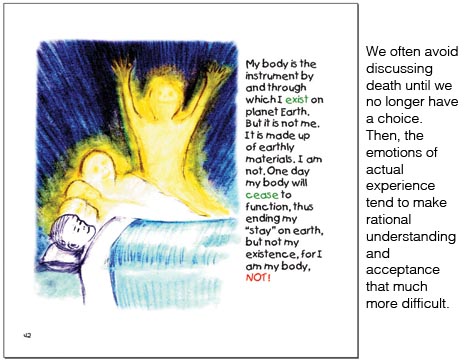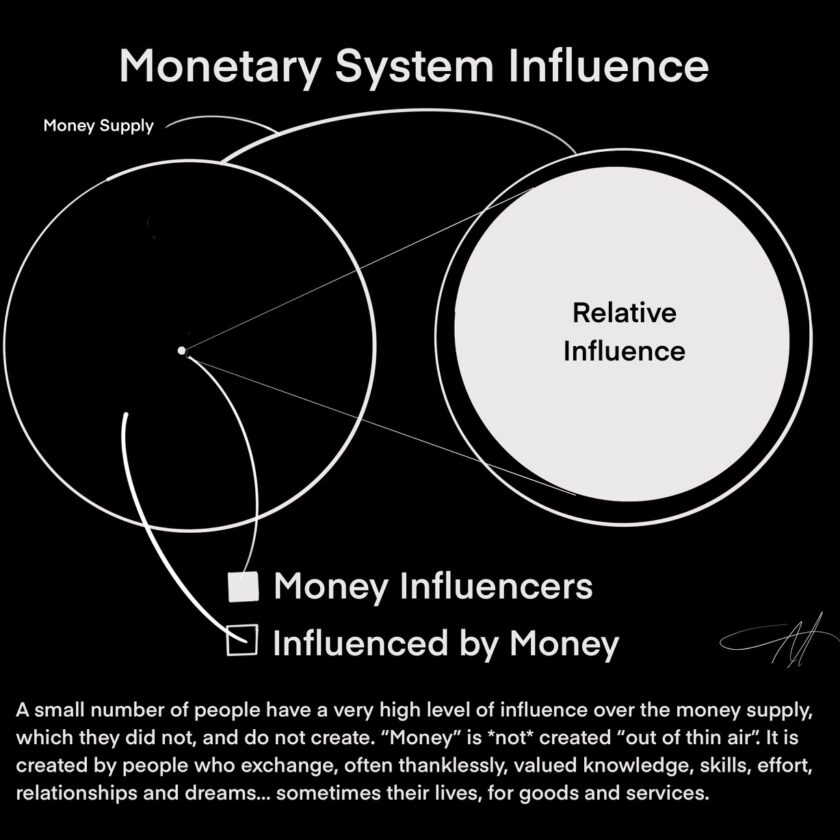[NOTE: This is the fourth of a 6-part essay titled, On Loving With Love, Not Fear. To read the third part, click here.]
Fear of Death
Another page speaks of the death of the body, but not the individual. The illustration shows a light or energy rising up from what might be a lifeless form. There is a joyful expression on the essence’s face as it leaves the body, its light growing brighter. This picture is worth several thousand words. It is not a representation of “death,” but of a natural change that has happened since the dawn of humanity, just like the butterfly that was once a larva that finally emerges from a cocoon. With this understanding we may appreciate the possibility that the only “finality” of life for us, is immortal change.
Some people are afraid to discuss death, particularly to children. This is often because they don’t know what to say about it, or they are so fearful of their own demise and the question of their existence and fate, that they don’t want to think about it. Others who are steeped in certain religious beliefs are faced with the challenge of putting matters of death into an ecclesiastical context, which will oftentimes be an alien concept to the child. Avoidance in this respect, particularly when a child is ready, or for some unfortunate reason, needs to ask about death, is another example of fear-in-action.
Color Me ‘Paper’
After some consideration, the illustrations of the children and adults in I Am My Body, NOT! were purposely left uncolored. This was not meant as a sign of disrespect to dark complexioned people, but instead, would stand out to anyone who had “issues” with skin color, providing an opportunity to take a look at how their thinking may be influencing their life experience.
One comment that crops up occasionally is that the children in I Am My Body, NOT! are “white.” As such, the book is deemed to lack cultural diversity because children are being conditioned to temper their responses to other people based on the likeness of their skin coloring, or other related factors.
This practice creates a problem that increasingly makes it seem easier for a camel to pass through the proverbial “head of a needle” than for members of some ethnic groups to find examples of heroic, ingenious, innovative, and courageous acts performed by “like looking people” that they can encourage their children to emulate.
Such thinking can further seduce people who resemble some of history’s great thinkers or achievers, to believe that they may indeed have a genetic “leg up” on other under represented groups. These points of view are founded on the belief that there are discrete “races” of human beings, and the supposition that some may have more “ability” than others. There is no real truth to this supposition. Given the right insights, information, attitude, motive, the willingness to form constructive relationships, and supporting actions, any human being that sets his or her mind to conceivable personal vision has the power to bring it to fruition.
Let there be no mistake that there is great and unacknowledged power in belief. One must be very circumspect in what he or she believes, for it is through our beliefs that the power to enable possibility is always operative, as is the power to disable.
NEXT: The ‘Missing Link’ is Still Missing








Hello there.
Just found your site. Great job!
I like it much.
look here http://live.com